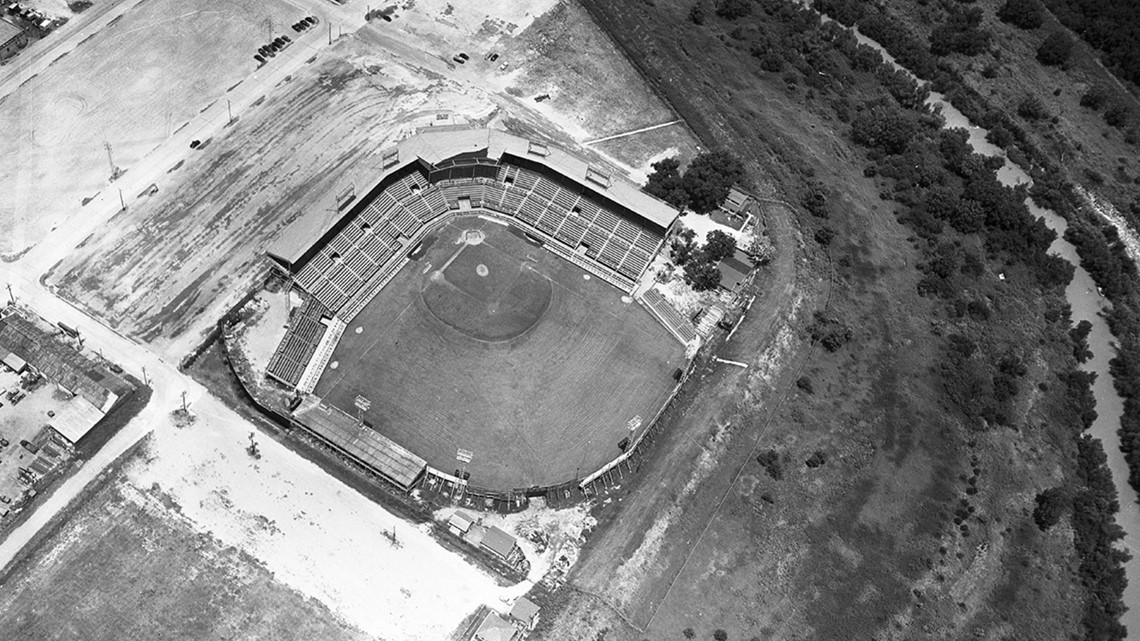FORT WORTH, Texas — Consultants crafting an updated vision for Fort Worth's Panther Island development recommend demolishing La Grave Field, a historic lot that's hosted professional baseball since 1926.
The stadium is now abandoned in disrepair, covered by graffiti and weeds. Still, some Fort Worth residents have fought to preserve the field where hall-of-famers, including Babe Ruth and Jackie Robinson, once played.
The property's current owner, the Tarrant Regional Water District, emphasized Wednesday the recommendations included in the consultants' report are merely suggestions. The TRWD board will likely solicit more input before it makes any decision related to La Grave Field's future.
Baseball could still be played on the lot, even if La Grave Field is knocked down. Sources tell WFAA there is at least one group aiming to construct a new ballpark on the property.
Panther Island
The consultants' report represents a significant step toward beginning the long-discussed development of the area, centered on a U.S. Army Corps of Engineers flood control project.
The corps could begin re-routing the Trinity River north of downtown in 2025. The new canal will cut across an existing peninsula, forming an island city leaders hope will become a destination district similar to San Antonio's River Walk.
Fort Worth leaders have discussed the idea for decades, but funding issues and controversies delayed its execution. Over time, a 2006 report outlining strategies for Panther Island's development lost relevance.
In 2023, the city of Fort Worth, the TRWD, Tarrant County, and four other entities partnered to commission a new guide for the project. They hired consulting firm HR&A to develop an updated vision for Panther Island's physical design, financing, and implementation.


"Our goal was to recognize that the original vision was 20 years ago and there's a lot about Fort Worth that's changed, there's a lot about the world that's changed, and there's a lot about the real estate market that's changed," HR&A adviser Aaron Abelson told WFAA.
The 300-page report, published and presented to the TRWD board and city council Tuesday, allows local leaders to begin the development process.
"These next steps are at our doorstep," TRWD spokesperson Matt Oliver said. "This is happening."
"How many cities that are already this size have this many acres of developable land right outside downtown... and on the waterfront?" Oliver asked. "This is a once in a generation opportunity."
The updated vision emphasizes public access to the island, particularly green space.
La Grave Field
The abandoned stadium standing today is the third ballpark at La Grave Field, "Baseball in Fort Worth" author Mark Presswood says.
The first facility opened in 1926. The Fort Worth Panthers, a Texas League baseball team, needed a bigger stadium to accommodate its growing fanbase.
The club had played at Morris Park, about four blocks away from La Grave and also on 7th Street.
In 1949, La Grave Field burned and flooded days apart. The Brooklyn Dodgers, which in 1946 affiliated with the Fort Worth club, paid for the stadium's reconstruction.
The second La Grave Field opened in 1950. It was the first baseball stadium in the American southwest designed for television broadcasts, Presswood says.


The Fort Worth Cats, newspaper writers' abbreviation for the Panthers' nickname, played their final game in 1964. La Grave Field was torn down in 1967.
Babe Ruth, Jackie Robinson, Willie Mays, Ty Cobb, Lou Gehrig, and Joe DiMaggio are among the hall-of-famers who played on the field in its golden era.


Developers built the current La Grave Field in 2001, keeping the original dugouts. Home plate is in the exact location today as it was in 1926.
The Fort Worth Cats resumed play as an independent club until their United League folded in 2014. Play briefly resumed before the Coronavirus Pandemic, which ultimately ended any chance for the club's revival.
For years, the field has sat, unoccupied and without purpose.
Demolition and potential future
The HR&A report notes that the stadium's poor condition makes reuse challenging. The facility also has a large footprint, which could "disrupt the creation of an urban district," it says.
The consultants recommend tearing down the stadium to make room for a public space that could anchor that quadrant of Panther Island. Any new park or greenspace should pay homage to the land's baseball history, the consultants added.
The report suggested the redesign could be modeled after San Diego's Lane Field Park, home to the Pacific Coast League Padres from 1936 to 1957.
The recommendation is not binding.
"Think of it like a framework," Oliver said. "They weren't creating a master plan, so there's not a map you can look at and say, 'That's going to be there or that's going to be there.'"
The TRWD does not yet want to rule out the possibility baseball returns to a new or improved La Grave Field, Oliver said.
Sources told WFAA Wednesday at least one group aims to build a new ballpark on the site, to be surrounded by other entertainment venues and attractions. It's not yet clear who will play in the new stadium, though.

